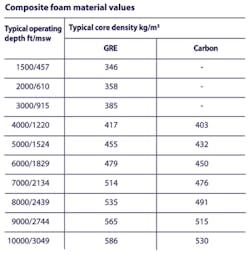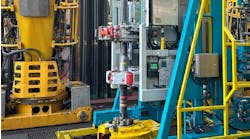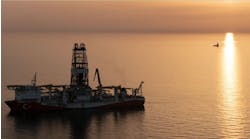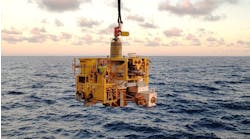John MacDonald
2H Offshore
Deepwater riser systems are going through a midlife crisis which must be addressed. Operators want to extend riser service life while many of the technologies required for validation are not yet mature. The most effective risk mitigation tool is to design out any threats. This is difficult because complex deepwater systems do not always respond as predicted in the design. Integrity management (IM) is not new to the Gulf of Mexico (GoM). Engineers have worked since the first offshore development to ensure that small threats do not lead to national incidents. What is new are recent events which point at the elephant in the room. Without a defined charter and sufficient budget to manage known risks, these risks escalate, thus reducing the value of an asset, and potentially endangering personnel and the environment. What has emerged in the GoM is a discipline of specialized engineers executing a common process called “integrity management”. That process seeks to anticipate integrity threats and mitigate them, rather than respond to incidents.
Deepwater lifecycle
A key to lifecycle reliability is a form of the hazard function called the “bathtub curve.” The bathtub curve shows an increased probability of failure both in early life (infant mortality), and again as the asset nears the anticipated end of life (wear-out). Deepwater GoM risers are no exception. The bathtub curve assumes a standard economic design principle: The component will be close to failure at the end of the design life.
Deepwater GoM risers lifecycle is a bathtub curve based on a typical asset with component design life of 25 years. The curve is overlaid with the age of the first deepwater risers (colored lines by type) and some of the more prominent riser system failures (colored circles by type).
The earliest GoM deepwater riser systems are in the “golden years” of their design life. As predicted, most failures occurred early in the life, primarily due to incorrect design assumptions and/or material defects. Engineers benefitted from early failures, and newer designs have matured in response. However, within the next five to 10 years the rate of wear-out failures is statistically more probable. These factors will test industry's ability to validate fitness for service and to extend the life of deepwater risers.
Criticality and maturity assessment
To prioritize efforts, 2H Offshore has identified the more critical components in deepwater riser systems based on years of experience in riser IM. Three typical GoM riser types (top tensioned [TTR], steel catenary [SCR], and flexible) were considered. Each riser type was sectioned (based on consistent properties and threats) and relevant threats were assessed for both the consequence of failure, and the probability of that failure. A total of 53 primary sections were ranked based on a standard risk assessment process, and assigned a relevant criticality rating.
Each section then was reviewed against available methods to effectively indicate a problem before failure, further referred to as maturity. In turn, maturity was evaluated through six equally weighted questions:
- Is the failure mechanism well understood? (predictable)
- Can it be designed against? (barriers)
- Can it be mitigated during operation? (easy to control/repair)
- Can it be monitored? (data acquisition and processing)
- Can the degradation be discreetly measured? (determine mean time to failure – MTTF)
- Do we (integrity engineers) regularly implement barriers/inspections?
Finally, criticality was plotted against maturity for all 53 sections. To prioritize efforts, a threshold was drawn such that sections above the threshold would benefit from the most immediate attention. Eleven sections were identified as very critical and/or immature.
Key threats
Some of the key threats to riser integrity were investigated, and remedies discussed. Some of the findings are discussed below.
Internal corrosion of SCRs. Mismanaged production fluids can corrode internal walls of deepwater risers. Internal corrosion reduces wall thickness until a combination of operational pressures, fatigue, and stress leads to riser failure. Chemical injection (CI) is the most common approach to mitigate corrosion. While the technology required to get CI into the production stream is mature, getting the right chemical mix is a very complex challenge.A mature technology to measure corrosion is intelligent pigging. Unfortunately the often complex subsea architecture renders production risers “un-piggable.” Crawlers and tethered pigs may solve the problem. Additionally, investment should be made in software which can provide real-time wall loss prediction.
External corrosion of above water risers. Similar to internal corrosion, external corrosion causes wall loss which can lead to riser failure. However, above the waterline, risers are single barrier and also are near personnel, which increase criticality. Methods to identify and repair above-water pipe are mature. Visual inspection combined with ultrasonic testing (UT) of corroded sections allow close and detailed assessment. The key is to have these riser sections regularly inspected behind obstructions and along the entire length to the waterline.
Degradation of the SCR flexible element.There are cases of elastomeric flexible element degradation in SCRs. Degradation has been attributed to unplanned operating conditions (pressure and temperature cycling) leading to creep rupture of the elastomeric layers. Asymmetric “bulging” of the creep is easy to see upon close visual inspection. Unfortunately, not many tools are available that can clean the marine growth to provide high-quality images for inspection. Pressure and temperature data are readily available and should be processed through simple algorithms to estimate accumulated creep, even predicting rupture. Key performance indicators and improved inspection can provide enough warning to plan a repair.
Riser strakes. Riser strakes in the upper 500 ft (152 m) foul with marine growth, typically within three to five years. One study indicates that as marine growth exceeds 1/3 of the strake height, the suppression efficiency begins to drop. Anti-foul treatments have been largely ineffective. Currently, strake cleaning often uses a water jet to clear the growth. This can be time consuming; depends heavily on the skill of the ROV pilot; and there is a risk of strake damage. More efficient cleaning tools are needed for fairings and strakes. Additionally, advancements in coatings to control marine growth without harming the environment should be pursued.
Stress and fatigue of the SCR touch-down point. Large stress events and cyclic loading accumulate fatigue damage at the SCR touch-down point. Accumulated fatigue damage can lead to through-wall cracks and/or catastrophic failure. There have been few efforts to validate deepwater riser fatigue, so the design standards recommend a safety factor of 10 in the face of the uncertainty. Effective “fatigue tracker” algorithms can be developed and validated to accumulate fatigue based on real-time measured environmental parameters. Ideally, marginal designs (<500-year factored fatigue life) should implement riser monitoring programs to supplement and validate the design assumptions and approach.
Stress and fatigue of TTR upper sections. Centralizers in the upper riser sections can degrade and/or “back-off.” Because the fatigue and strength response is often optimized based on centralizer location/gap, the degradation can lead to unexpected operational loads. Regular visual inspections with clearly defined acceptance criteria are key to mitigating long-term degradation. Additionally, the integrity engineers should be monitoring available tension data and calculated bending loads to identify negative trends.
TTR sections within the aircan stem. Similar to the upper sections, TTR stresses within the aircan and stem are often optimized by centralizer placement. The challenge however, is that after installation there is no method to verify the condition or location of the centralizers. Designs should ensure that key elements affecting system response, such as centralizer location can be validated throughout the asset life. Where direct inspection is infeasible, data monitoring can again be used by the IM engineer as an indicator of performance.
Corrosion in flexible risers. The armor wire in flexible risers can be subjected to corrosive fluids due to internal or external sheath failure. The flexible riser pipe design is such that there may be no visual indicators of a problem. The typical approach is annulus testing which, like guided wave UT, can be subjective and depends on the technician. Several methods are at varying degrees of maturity such as embedded fiber optics, acoustic monitoring, and scanning tools that can deal with the multiple layers in a flexible riser. These technologies need to be matured.
The way forward
Integrity engineers should anticipate an increase in end-of-life failures of deepwater risers within the next 5 to 10 years. There are a number of technologies to validate system performance which should be matured. These include the following:
- Development of vehicles to conduct in-line inspection (ILI) for “un-piggable” lines
- Utilization of available data (tension, P&T, environment, etc.) as indicators of system performance
- Validation through motion or strain monitoring of riser performance in cutting edge designs
- Methods of component inspection, replacement, and emergency response procedures should be designed-in.
These gaps should be of first priority in terms of industry development to stay ahead of the aging infrastructure.
In addition to the technical challenges, the IM discipline faces a number of industry hurdles to overcome. A lack of common IM standards for deepwater GoM risers are giving way to segmented assumptions, approaches, and dialog about where the industry should go. Failure data for deepwater risers is limited. Operators should share data on anomalies and failures, along with the inevitable associated root-cause assessments. This data could be held in a common industry database consisting of both the component and system reliability in operation experience including failures.
Ultimately, compilation and sharing of intergrity issue information will help drive improvements in component design, increase reliability, and, consequently, enhance protection of the environment and personnel safety.
Offshore Articles Archives
View Oil and Gas Articles on PennEnergy.com





